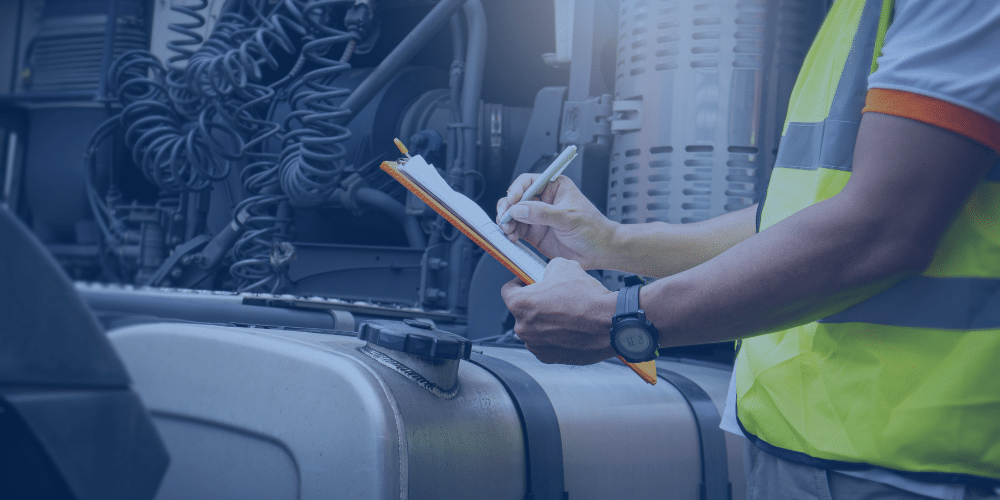Strategies for Recyclers During a Roadside Inspection
During ReMA 2025 – The Show, Officer Clayton Peterson, along with other representatives from the California Highway Patrol, volunteered to participate at ReMA’s Safety Pavilion to exchange knowledge and information with the recycled materials industry.
For the first time ever, ReMA established a dedicated Safety Pavilion at the annual convention that featured federal, state, and local government representatives alongside private organizations. The pavilion booths featured resources for members on a variety of safety topics including fire safety, electrical safety, and mental health resources, as well as vendor booths with resources to help members.
While Peterson was on-site at the convention, ReMA News had the opportunity to chat with him about what recyclers should do during a roadside inspection, advice for recyclers to make the process run smoothly, and strategies recyclers can do to correct some common mistakes.
What are some typical frustrations you experience during a roadside inspection or while interacting with carriers?
One of the frustrations I have during a roadside inspection, is the drivers understanding or knowledge of the rules. Usually when I pull someone over, there is a clear violation, however the driver is often confused because they didn’t know they were committing a violation. Another issue that arises, is following instructions during an enforcement stop or inspection. Some drivers will fail to yield to the side of the road, when I’m just trying to pull them over.
They fail to do anything to indicate that they’ve seen my lights and sirens, even though I’m straddling lanes. What I’m looking for is at least acknowledgement that they’ve seen me. I understand that these drivers are in large vehicles and when I’m attempting to stop them, I’m not going to hide behind them with lights and sirens. One way a driver can acknowledge if they see me, is by activating a turn signal or something to show that they know I’m there. Then that at least shows me they see me and hopefully are looking for a safe location for to pull over.
What’s your advice for drivers to make the inspection process run smoothly?
Listen for the officer’s instructions. We try to be precise in everything we say, especially during the inspection process. There’s a time we need you to hit the turn signal, apply the brakes, etc. and the biggest issue I have is when someone is not listening to my instructions. Sometimes people get so nervous that they don’t listen to or focus on my instructions. I understand that not everyone is comfortable around law enforcement, which can be intimidating. Sometimes I can tell that they’re nervous and just saying “yes.” It is more important that they understand my instructions instead of just nodding absently when they did not really understand. It is critical to make sure that we both can understand each other for the driver’s safety, my safety and the safety of everyone around us.
Why is it important for law enforcement to build relationships with carriers? And vice versa.
The biggest benefit is safety. When carriers build a good working relationship with law enforcement, it helps them by being able to go to a trusted source, to obtain correct information on rules/regulations, getting comfortable with inspection procedures, knowing the expectations of law enforcement and the inspection process. When law enforcement builds a good working rapport with carriers, then it helps us by knowing how a carrier typically operates, their typical procedures, drivers and their routes and the loads typically carried.
Safety is first and foremost the most important thing for us and we know carriers are trying to live by those practices as well. If we have a good relationship with one another, that means they’ll feel more comfortable asking us questions and trying to find the right information. A lot of times they may not realize that there was an issue, if something is a violation or even out of service. I get phone calls daily and a lot of time people send me photos to look to see if it’s a violation. I’m more than happy to help and do what I can because it helps bridge that awareness gap.
What are some common issues you see when you pull over recyclers? What can they do to correct those issues?
Typically, recyclers are hauling heavy weight, so weight is a big issue. Especially in California, you could be overweight by your axle, axle group, axle end, tire load limits. If you have an open bed trailer, things can get loose, fall onto the roadway, and damage other vehicles or even cause an accident. Load securement is one of the most common issues I see.
When pulling them over, if we don’t like where they stop, we’re going to tell them that they need to move to a different location. We appreciate that they pulled over quickly, but they need to be safe about pulling over. Sometimes they’re so concerned that law enforcement is behind that them, they make an unsafe turning movement in front of other vehicles, slam on the brakes with vehicles behind them or pull into a dangerous spot where I can’t conduct the inspection. At the end of the day, recyclers are driving large vehicles (small moving buildings really) with a lot of weight, which has the potential to cause loss of life, damage property etc. It all comes down to safety; I don’t want to see anyone get hurt, and we’re working to make sure that we all get home safe.
